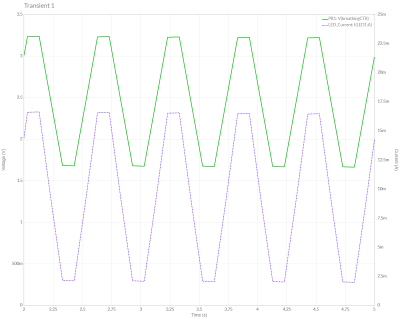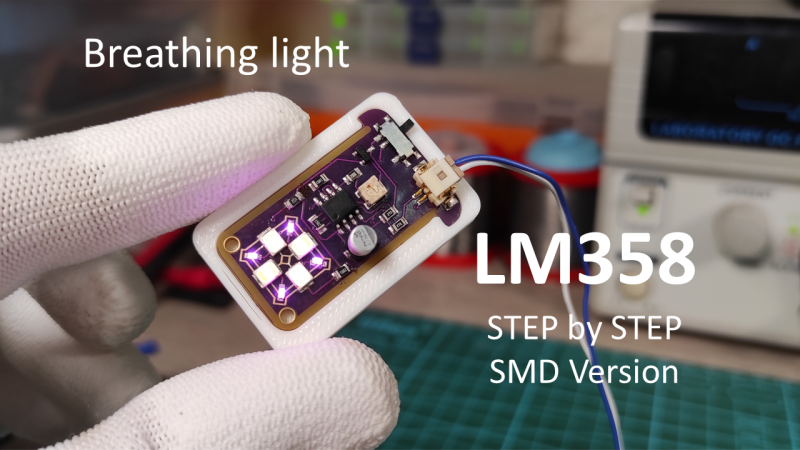If you’ve ever seen those gadgets with the “breathing light” LEDs on them and wondered how to do it, then [DIY GUY Chris] can show you how to design your own surface-mount version, using only analogue electronics.

The circuit itself is built around a slow triangular-wave oscillator, that ramps the current up and down in the LEDs to make it look as if the lights are breathing in and out. The overall effect is rather pleasing, and the oscillation speed can be adjusted using the on-board potentiometer.
This project is actually an update to a previous version that used through-hole components (also shown in the video below), and goes to show that revisiting completed projects can give them a new lease of life. It also shows how easy it has become to design and order custom circuit boards these days. It’s not so long ago that a project like this would have been either made on stripboard or etched from copper-plated FR4 in a bubbling tank of acid!
If you have revisited an old project that you’re proud of and would like to show others, why not drop us a message on our tips line?
We have covered some other options for breathing LEDs in the past, such as this digital logic version, and this Arduino library that has a host of other effects to choose from, too.

















Pure analog is so pleasing for this effect instead of the ramping pwm as utilized by every manufacturer
Well, nearly everyone else uses PWM because they want the LED to do more than just sit there and “breathe”.
This circuit, as nice as the effect is, is a one-trick pony. It only does the breathing effect. It does it well, but that’s all it does.
PWM is a cheap way of doing the same thing, not as “well”, but with greater flexibility such as being able to adjust the frequency, duty cycle or remain on/off.
The article clearly states it’s analog. One trick ponies are nice to have especially in the film/video industry where pwm can cause artifacts.
You can have your pwm working at high enough frequency for video not to be a problem. Also, you can smooth the pwm with other stuff.
Ok now adapt it to the nearly logarithmic sensitivity of the human eye.
https://en.wikipedia.org/wiki/Weber%E2%80%93Fechner_law
Actually, linear effects are usually not very pretty. But, because your eye sensitivity is not linear, you can use a linear effect for your lights and still get a pretty result. If you normalize it towards the sensitivity of the eye, it becomes less pleasing.
This was not my experience when I coded up one of these years ago. I started with a linear ramp (using high speed PWM so as to appear more like analog) and it did not look right at all! It started very dark and quickly got bright and stayed bright. It didn’t look *linear* to my (log response) eye. So, I coded it to be exponential and it looked much better.
Just feed the waveform into a log amp, only another 3 components. A resistor, diode, and an opamp.
Didn’t the big fruit company patent this effect? Breathing effect.
Only if you use PWM, apparently… https://patents.google.com/patent/US6658577B2/en
That makes me tense… the breathing is far too fast! This isn’t a breathing animation it’s a hyperventilating animation!
Slow it down and it’d be beautiful.
Wanted to make a circuit for doing just this on cold cathode tubes and led strings back in 2001-2002 era and place them all around our server rack at work. I tried a pulsing current circuit but due to a lack of smarts I never got it working properly.
Looked and looked but eventually just gave up searching as I couldnt find anything published to do the job.
Essentially wanted the entire server room to ‘breathe’ at night.
Rate of breathing proportional to server workload I hope!